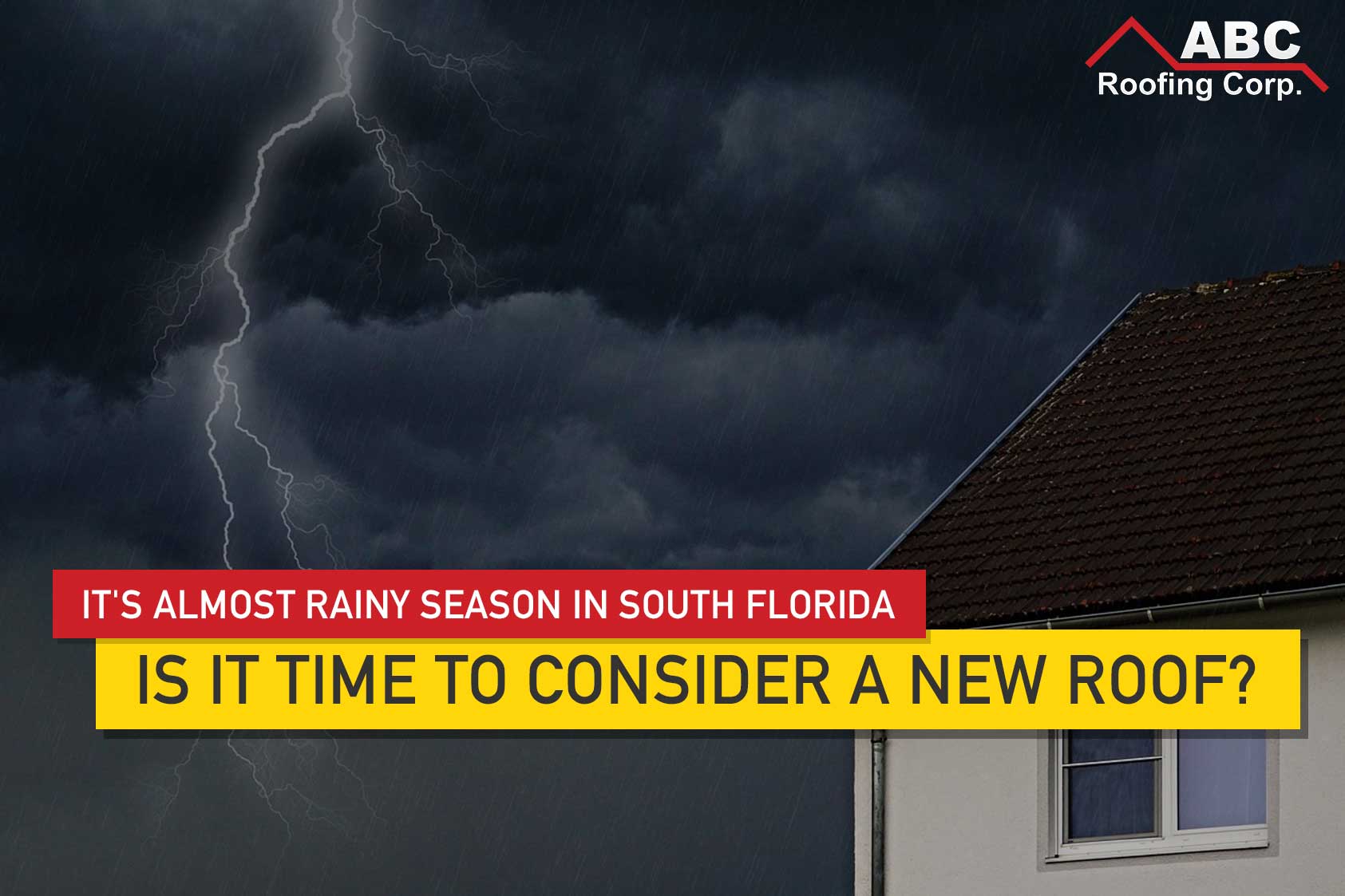
We’re getting close to South Florida’s annual rainy season, which begins in May (hurricane season then follows from June through October). The season brings sudden squalls and thunderstorms to the tropical South Florida region, but we also enjoy stunning sunsets and rainbows (yes, rainbows). Commercial and residential property owners should be prepared ahead of time with storm shutters, installed high-impact windows, and an emergency preparedness plan. During the cooler months in South Florida, what other parts of the country call “winter,” is also an ideal time of year to schedule a new roof or have major roof repair done. In this article, we’ll provide insight and tips on when to consider a new residential or commercial roof in preparation for the season ahead.
Schedule An Inspection
If your current roof is over 20+ years in age, the first step is to schedule an inspection, which will help guide you through the planning process. An ABC licensed roofer can determine what is needed in preparation for the rainy season, create a maintenance plan, and they can tell you when to consider installing a new roof. An inspection also outlines what you need to prioritize and what your projected budget may be.
The best time to schedule a roofer is during the Spring with a target installation during the Winter season. The temperate winters in South Florida provide ideal conditions for repairs or new roof installation. Spring is best to schedule an inspection and project planning, but not ideal for installation at the on-set of the rainy season. Sudden storms and damp conditions could also cause project delays. Roofers also tend to avoid major roof repair and installation this time of year for worker safety.
Summer is usually the low season for the South Florida roofing industry because of the hot and humid conditions. Given how labor intensive their trade is, roofers can experience heat exhaustion and dehydration if working consistently under the hot sun.
Rooftop Options
Because of the consistent exposure to heat and moisture, some roof sections can be damaged or in need of replacement. Asphalt shingle roofs can last up to 20 years, although sections can still break down over time. A telltale sign of a shingle section that may need to be replaced, are those that are visibly granulated, blistered, or curling. Tile roofs are more durable to exposure from the region’s climate and require less maintenance and replacement. The industry standard for the region is clay tile for its longevity and aesthetic beauty. Although more expensive, tile roofs are impermeable, resistant to pest intrusion, and heat absorbent (saving you on energy costs). You can learn more about the benefits of tile from our previous post on installing a Spanish-style roof.
Roof Top Tips!
- Have your roof inspector check for asphalt shingles that are warped, bald, granulated, or show signs of algae growth. These sections should be replaced (also cross-check for underlying water damage to the decking and membrane).
- Older tile sections should be checked for broken or dislodged sets that could have been subjected to high winds or heavy storms.
- Before the rainy season begins, check that all valleys and gutters are cleared and functioning properly.
- The best time to install a new roof is early to mid-Winter, during the region’s temperate climate and ideal working conditions.
The A+ ABC Roof
If you decide to go all in and install a new roof, you’re in luck. A licensed and certified ABC roofer will walk you through each step of the process from planning, budgeting, to installation and project close-out. Our roofers work closely with contractors and architects depending on the scale and requirements of your project. We also provide warranties from one year to 25 years in addition to materials and labor warranties on site-specific installations. Call us today at 954-344-4622.
